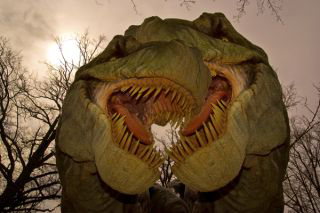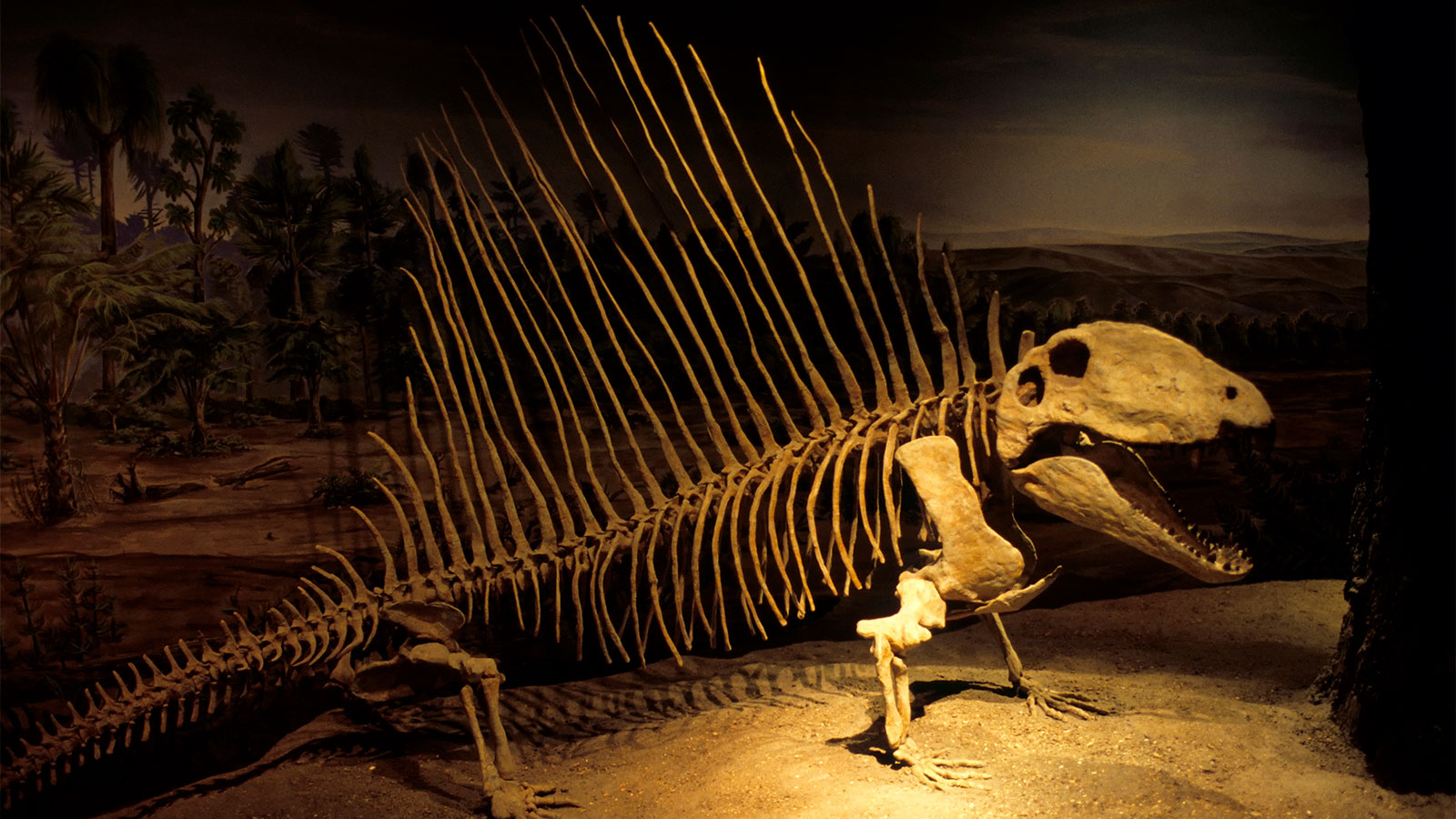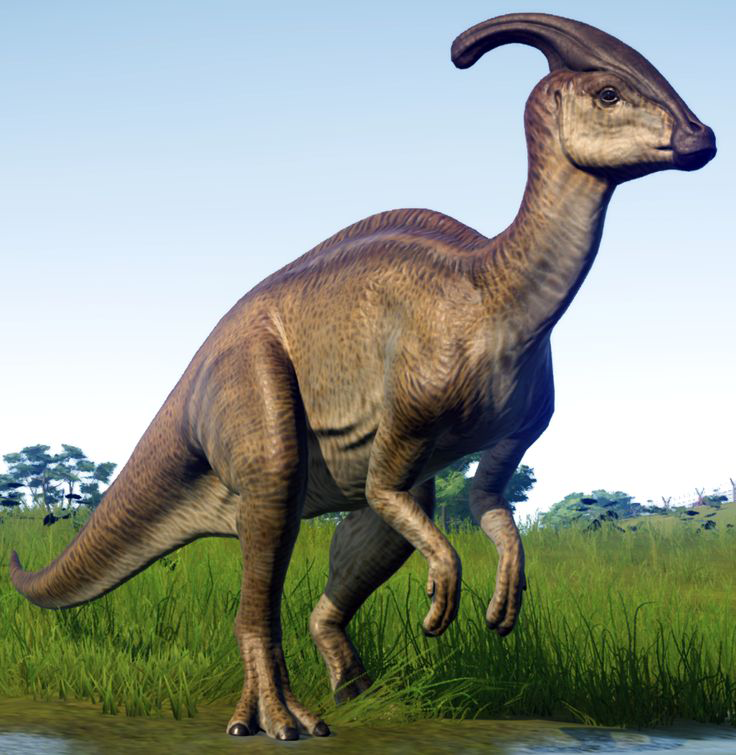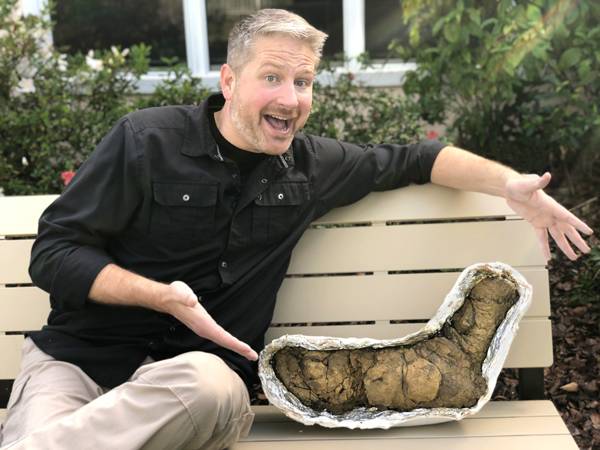

This planet has been here for a damn sight longer than we have and, through its history, has been inhabited by a whole array of wacky creatures. From giant ground sloths that weighed up to 4 tons (Megatherium), to millipedes as long as a car (Arthropleura), to Glyptodons (think of an armadillo with a turtle shell that’s the size of a fucking Volkswagen). Our most enthusiastic collective fascination, however, is reserved for dinosaurs. With that in mind, let’s review some of the more obscure, wacky, off-the-wall dinosaur-related facts.
How did dinosaurs get it on? Well, that’s a damn good question, and science isn’t in complete agreement on this controversial topic, but a popular and likely answer is "The same way that birds do, duh." Which is via a rather nasty procedure known as a "cloacal kiss." Don’t be fooled by the name; this is not very nice. For those of you not in the know, a cloaca is a sort of tube where pretty much everything is expelled. Excrement, urine, semen, you name it. Just bonk two cloacas together, squirt baby juice from one bird to another, and that’s pretty much it. It sure makes me wonder why we use the term "birds and the bees," cause like—ew.

Much less awesomely known as the "Great Dinosaur Rush," this fact isn’t exactly about dinosaurs but more about human greed. From around 1877-1892, a bizarre rivalry between Edward Drinker Cope and Othniel Charles March developed, each using their personal wealth and influence to out-discover as many fossils as possible over the other. Hunting mostly in the fossil beds of Colorado, Nebraska, and Wyoming, they each resorted to bribery, theft, destruction of fossils, and incredibly sloppy paleontology, misidentifying countless specimens in their thirst for scientific supremacy. By the end of it, both were broke. On the upside, though, they did get their quarrel named after something that sounds like a Star Wars porno, and that’s a hell of a legacy.
You heard me. During a pretty lousy time to be alive called the Permian, there were a number of not-a-dinosaur-but-hell-if-it-doesn’t-look-like-ones, including Dimetrodon. Dinosaurs did exist during this time but were usually small and definitely not the kings they’d become. Dimetrodon and his fellow synapsids (mammal-like reptiles) were the big boys of the time, filling pretty much all the ecological niches for large animals. Unfortunately, a mass extinction bigger than the one that would go on to kill the dinosaurs ended their reign—known as "the Great Dying ." This event was caused by a massive eruption of a super-volcano called the Siberian Traps, which spewed gargantuan amounts of greenhouse gases and ash into the atmosphere. 90-95% of life on Earth went kaput, including nearly every mammal-like reptile. The few that remained were wildly outgunned by dinosaurs, who were more resistant to the extreme shittiness of Earth at that time. However, a few managed to scrape by—and good that they did, because they would go on to evolve into actual mammals over the next few million years, and ultimately us. So, thanks, great (x several million) grandpa Dimetrodon.

In a truly bizarre new theory, some compelling new research has shown that many of the duck-billed dinosaurs had some unique nasal passages that looped from their schnozzes to their ornate head-crests, then passed into a couple of large air-chamber things attached to their throats. This suggests that if they sneezed (or pushed air through their nostrils, whatever), they would produce an array of noises. Think of the head crest as being something like their speaker system. Whether these sounds were for mating, danger alerts, screamo, or gossiping about Cathy in accounting’s affair with Steve, we’ll never know. What we do know, though, is that their voices were probably higher when they were younger and deeper as they aged, so at some point, one of them was definitely publicly embarrassed in choir when his voice cracked.

Why did T-Rex have those stubby little appendages? The answer is no one knows for sure. Classically, it was the opinion of science that they were an evolutionary holdover, like wisdom teeth or ass hair. Modern science has gotten more creative, though, and has proposed that they were for close combat slashing (as the musculature that supported their dopey little limbs was actually pretty fuckin’ serious). Alternately, another theory states that they may have gotten smaller as a preventative measure for when there was a feeding frenzy—bigger arms might be more at risk of being torn off by your fellow T-Rexes. That would be a hell of a party foul, for sure—finger food in the very literal sense.
Known as "coprolites," fossilized dino shit can be found in abundance on this planet. They’ve been invaluable in our study of dinosaur behavior and diet and have thus been studied extensively for this reason. Coprolite is so common that you can even find necklaces, rings, bracelets, and earrings made from polished dino doo-doo all over the internet for a very modest price. The largest coprolite ever discovered measures 67.5 centimeters (2 feet 2.5 inches) and up to 15.7 centimeters (6.2 inches) wide. Affectionately known as "Barnum" (after Barnum Brown, who discovered the first T-Rex in 1902, not P.T. Barnum, though arguably, that would have been funnier). Because of Barnum’s size, it’s likely to have been crapped out by a large carnivore, though which one exactly is uncertain. Owned by coprolite collector George Frandsen, he’s called it his "prized possession." There really is a hobby out there for everyone.

While by no means exhaustive, I hope you found this overview to have provided at least a little super inappropriate dinner conversation (don’t forget to wear your coprolite bracelet!). The Earth’s history is filled with absurdity, after all.
Esmeralda Rupp-Spangle is a writer and aspiring coprolite collector. She can be found on Instagram as @EsmeraldaSilentCitadel.